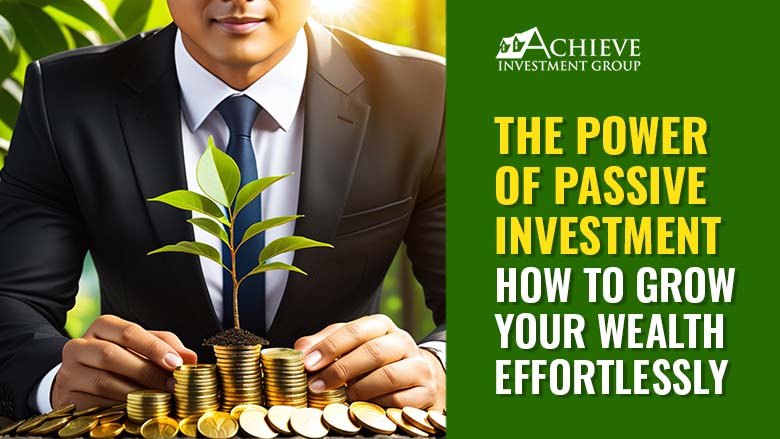The Power of Passive Investment: How to Grow Your Wealth Effortlessly
Passive investment has revolutionized how individuals approach wealth building, providing a practical, lower-maintenance method of growing one’s financial portfolio. Unlike active investing, which requires constant monitoring and trading, passive investing offers a way to increase your wealth steadily over time with minimal effort. Understanding Passive Investment At its core, passive investment involves putting your money into investment vehicles that track a market index or predefined rules with minimal trading. It’s built on the idea that the market will provide returns over time, and attempts to “beat the market” are often unsuccessful and costly. Why Choose Passive Investment? One of the primary benefits of passive investing is its cost-effectiveness. Without frequent trading or active management, costs are significantly lower, which can greatly enhance net returns. Additionally, passive investments are usually highly diversified, spreading out potential risks across a wide array of assets, which lessens the impact of volatility on any single investment. Popular Passive Investment Strategies Common strategies within passive investing include investing in index funds, ETFs, and bond funds. These vehicles are designed to mimic the performance of a particular index, such as the S&P 500, providing investors with broad market exposure. The Role of Risk in Passive Investment Understanding your risk tolerance is crucial in passive investing. This strategy typically involves a long-term perspective, where short-term fluctuations are less significant than long-term growth potential. Risk management is inherently built into passive investment portfolios through diversification. The Power of Compounding The real power of passive investment lies in the magic of compounding interest. For instance, reinvesting dividends from stocks or interest from bonds generates earnings on top of earnings, leading to exponential growth over decades. Setting Up Your Passive Investment Portfolio Setting up a passive investment portfolio begins with defining your financial goals and understanding your investment horizon. The key is choosing the right mix of assets—stocks, bonds, real estate funds—to match your goals and risk tolerance. Tools and Resources for Passive Investors Today’s investors have numerous tools to help manage their investments, from sophisticated investment platforms to robo-advisors that automate the investing process according to personal preferences and goals. Tax Considerations in Passive Investing Passive investing can also be optimized for tax efficiency, using accounts like IRAs and 401(k)s or choosing tax-efficient funds to minimize the tax burden. Monitoring and Rebalancing Your Portfolio Even a passive investment strategy requires some oversight—mainly periodic rebalancing to ensure that the asset allocation aligns with your risk tolerance and investment goals. The Impact of Market Volatility on Passive Investments While passive investments do not seek to profit from short-term market fluctuations, understanding how they react to market conditions can help investors maintain confidence in their long-term strategy. Challenges and Limitations of Passive Investing Despite its many benefits, passive investing has challenges. It requires patience and a firm adherence to the chosen strategy, even during market downturns. Future Trends in Passive Investment As financial technology advances, passive investing strategies can expect to become even more accessible and varied, offering new ways for individuals to grow their wealth effortlessly. Conclusion The journey to financial independence through passive investment is both a practical and attainable goal. By understanding the fundamental principles of passive investing and harnessing the tools available, anyone can confidently start on this path. FAQs 1. What is the minimum amount needed to start passive investing? There is no definitive minimum; many platforms allow you to start with as little as $100. 2. How do I choose between ETFs and index funds? Consider factors like trading flexibility, tax considerations, and expense ratios. 3. What are the signs that I should rebalance my portfolio? Significant shifts in your intended asset allocation are a key indicator. 4. How does passive investing fit into a retirement plan? It provides a low-stress, efficient way to build wealth over the long term. 5. Can passive investment strategies outperform active ones? Historically, passive strategies have outperformed active management, especially after fees and taxes are considered.






